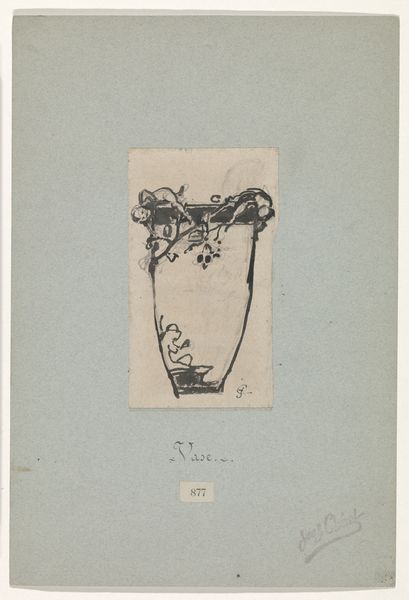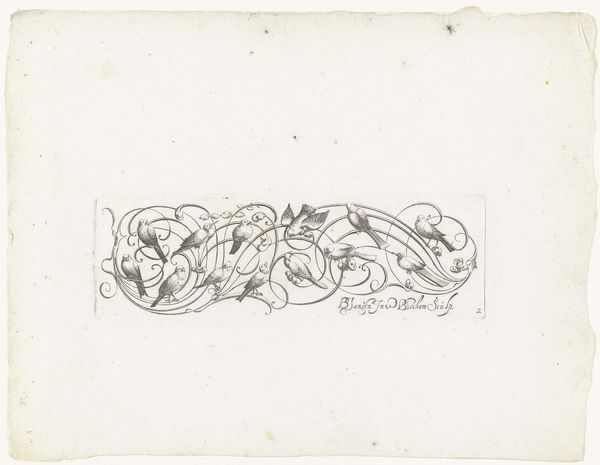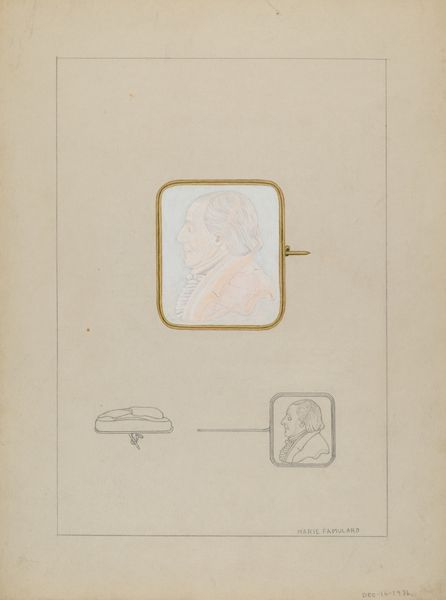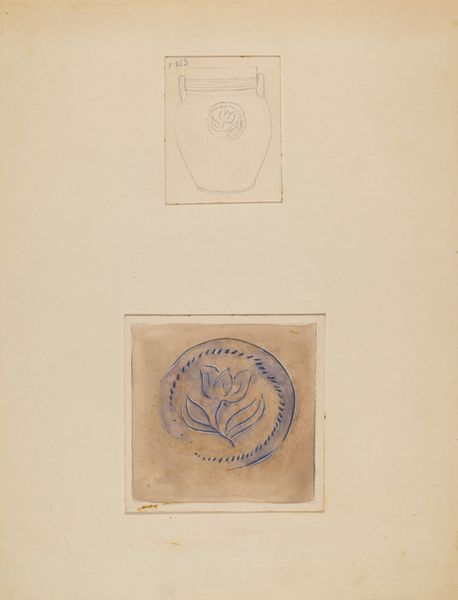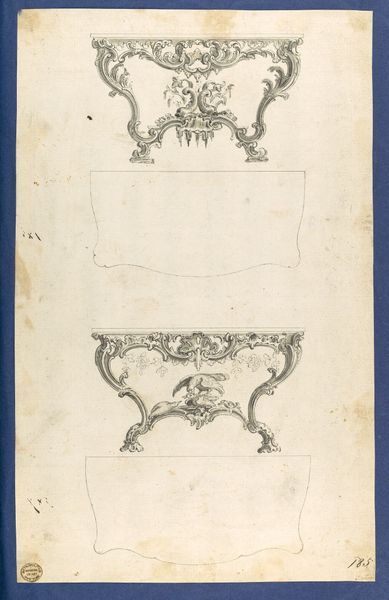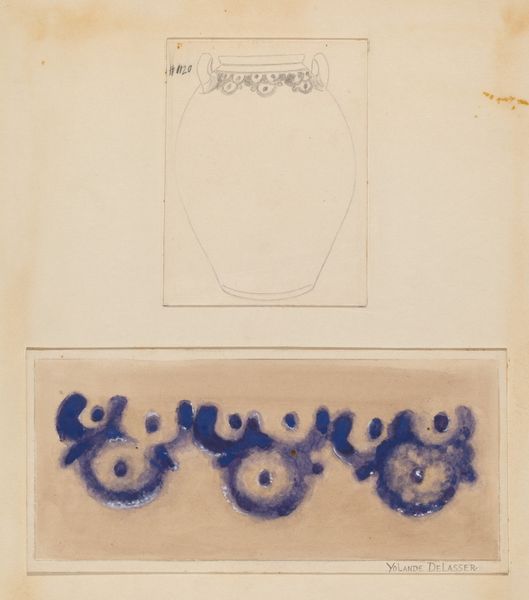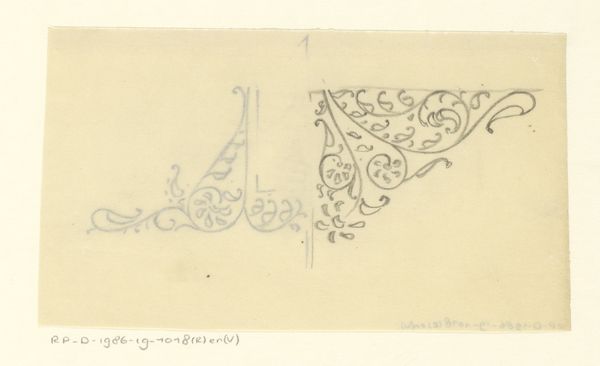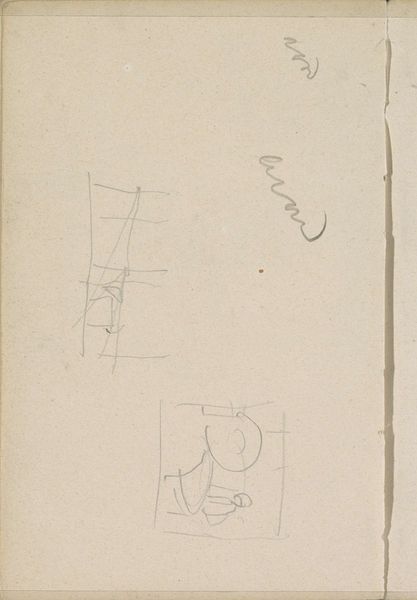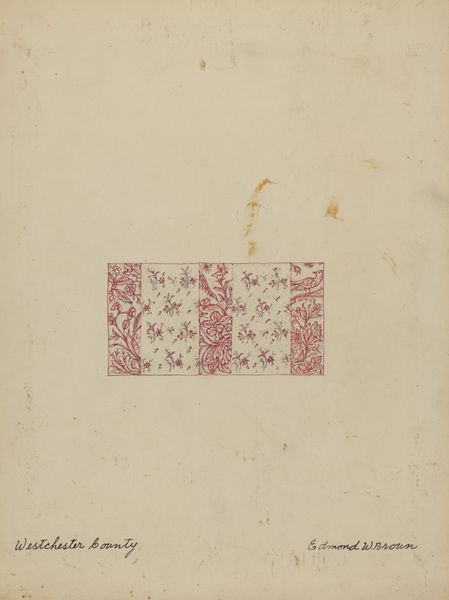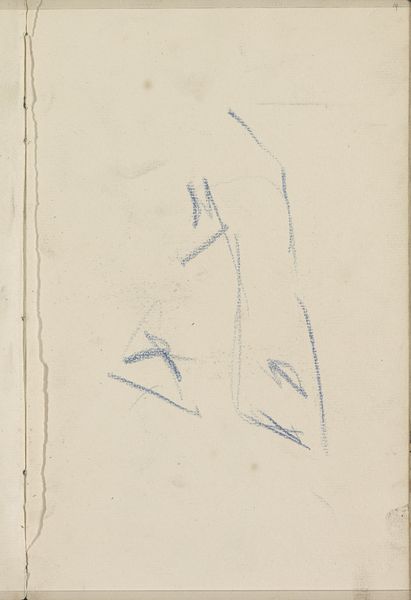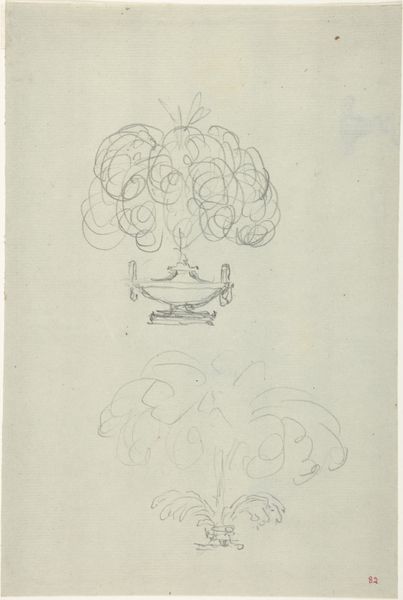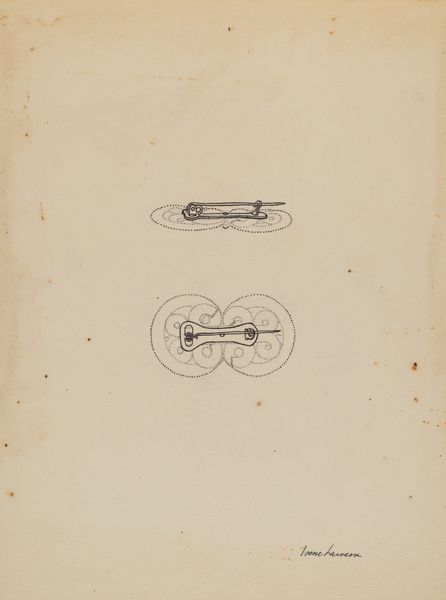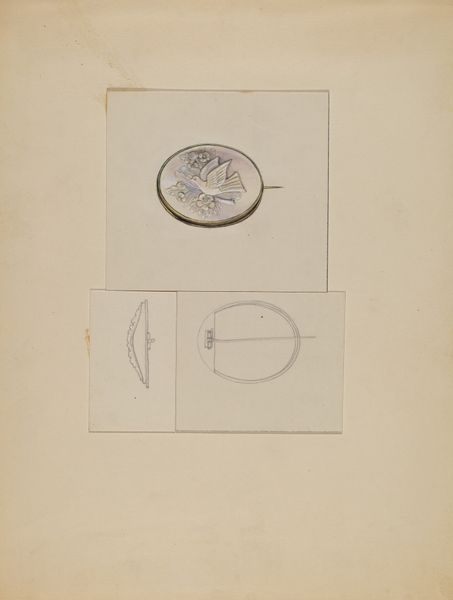
drawing, paper, watercolor, pencil
#
drawing
#
water colours
#
paper
#
watercolor
#
pencil
#
abstraction
#
line
#
watercolor
Dimensions: overall: 29 x 22.7 cm (11 7/16 x 8 15/16 in.) Original IAD Object: 11" High 8" Dia(top) 5 3/4" Dia(bot)
Copyright: National Gallery of Art: CC0 1.0
Curator: Editor: This is Yolande Delasser's "Crock" from around 1936, created with pencil and watercolor on paper. It's quite an unusual piece; the way the object is depicted as separate studies. How do you approach interpreting a drawing like this? Curator: Well, as a materialist, my eye goes immediately to the process and materials. The visible pencil underdrawing is crucial. It reveals Delasser's working method, her hesitations and adjustments as she figured out the form. The watercolor then adds a layer, not necessarily to refine, but almost to abstract the text or form further. How does this emphasis on process speak to the social context of art production at the time? Editor: It feels almost like a breakdown, stripping away the 'finished' quality of a piece. Maybe a commentary on mass production versus individual craftsmanship? Curator: Precisely. Consider the era. 1936 – the height of the Depression. Artists were grappling with the changing landscape of labor and the role of craft in a world increasingly dominated by industry. This "Crock" could be read as a questioning of value itself – what makes an object 'art,' the labor, the materials, or something else? Notice how she studies the object like an exercise in penmanship in the purple block: this relates both image, text and handwriting into a study. Does this affect your perspective? Editor: Definitely. Seeing it as a record of labor changes my understanding. It’s not just a still life; it’s a study in how something is made and valued. Is the craft something worth examining? Curator: Exactly. Delasser uses her technique to question those established hierarchies between, fine art, craft and utilitarian object. Editor: I never thought about a simple drawing holding so many ideas. Curator: By looking closely at materials and the means of production, we can reveal a deeper understanding of the art's message, its social commentary, and how it interacts with the world around it. I can see a new way of examining what matters about the object now.
Comments
No comments
Be the first to comment and join the conversation on the ultimate creative platform.
